Let’s begin this week with a look at the Paramount Shorts trade advertisement for the 1952-53 season. Some interesting points to note here. Apparently Casper was featured on a marquee somewhere, or maybe it was wishful thinking, but it was a good enough idea for Paramount to build the advertisement around. Note “Little Billy” represents the Kartunes. This season would mark the end of that series – and the beginning of another, Herman and Katnip.
Also note the image of Casper on the top left… obviously an early model that gives him a “white sheet” motif, with smaller feet. Also note this little known fact: Harvey later obtained Paramount’s live action Toppers, Pacemakers and Sportlights live action shorts in the deal they would make with Paramount in 1958 – but we will talk about that in a later post.
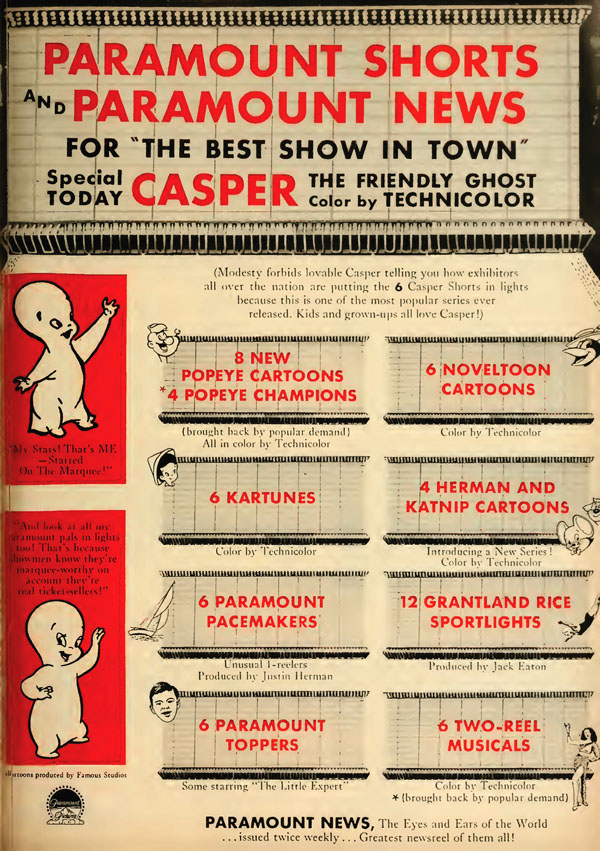
Here’s the three-page contract extension for the 52-53 season (sorry about the hard-to-read main page – original was a tissue paper carbon page which has not withstood the ravages of time. If anyone wants to take a crack at transcribing it, be my guest). Here you can see (if you squint) that Paramount ordered four “Herman The Mouse” cartoons – which, of course, became the Herman and Katnip series. Also note that Famous received a $60,000 raise for production of this season of cartoons.
Trade magazines like Boxoffice and Motion Picture Exhibitor continue to follow the trends among shorts in the theaters. Boxoffice’s survey (below left) has Popeye knocked down to 8th place in popularity – but at least he’s still in the “top ten”. Toreadorable is noted as number 9 amongst all “best shorts”! Exhibitor comments are quoted, including this one from Iowa: “Could get along without Casper The Ghost.” Golly, that’s not so “friendly”.
Motion Picture Exhibitor ignored Famous Studios entirely (though Paramount’s live action sports reels were awarded). That image selected for the Universal One-Reel Musical, “Cartoon Melodies” – we need to see these – they sound intriguing.
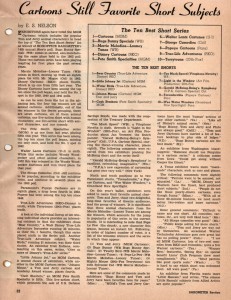


Starting this week I’ll list the releases for each season by series, adding release dates, director/head animator credit, a one line plot synopsis, and an occasional historic note.
POPEYE
SHUTEYE POPEYE – (10/3/52) Sparber/Eugster, A snoring Popeye does battle with a sleep-deprived mouse.
BIG BAD SINDBAD – (12/12/52) Kneitel/Johnson. Popeye tells his nephews of his battle with Sindbad the Sailor (via stock footage from the Fleischer two-reeler).
ANCIENT FISTORY – (1/30/53) Kneitel/Eugster. A parody of Cinderella, with Popeye as “Cinderfella”.
CHILD SOCK-OLOGY – (3/27/53) Sparber/Johnson. Popeye and Bluto compete to rescue Swee’pea who is crawling about a construction site.
POPEYE’S MIRTHDAY – (5/22/53) Kneitel/Johnson. The nephews try to keep Popeye from entering the house until Olive finishes preparing for his surprise birthday party.
TOREADORABLE – (6/12/53) Kneitel/Johnson. Popeye versus Matador Bluto in a bullfighting arena.
BABY WANTS A BATTLE – (7/24/53) Kneitel/Eugster. Popeye and Bluto recall their first battle, as babies in the 1890s.
FIREMAN’S BRAWL – (8/24/53) Sparber/Johnson. A remake of Fleischer’s The Two Alarm Fire, as Popeye and Bluto compete to contain Olive’s house fire.
Below (click to enlarge) storyboard panels from Popeye’s Mirthday (courtesy of Howard Lowery).
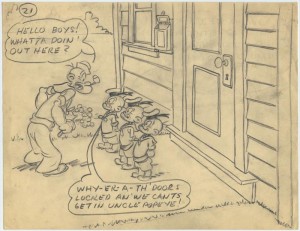




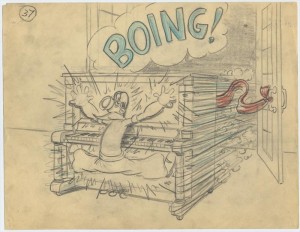

NOVELTOONS
THE CASE OF THE COCKEYED CANARY (Little Audrey) – (12/19/52) Kneitel/Muffatti. Private Eye Audrey investigates the murder of Cock Robin.
FEAST AND FURIOUS (Finny the Goldfish) – (12/26/52) Sparber/Waldman. Katnip tries to eat Finny the goldfish.
STARTING FROM HATCH (Baby Huey) – (3/6/53) Kneitel/Tendlar. Huey is born (again) and is chased by the Fox.
WINNER BY A HARE (Tommy Tortoise and Moe Hare) – (4/17/53) Sparber/Waldman. Hare bets everything on his race with turtle.
BETTER BAIT THAN NEVER (Buzzy The Crow) – (6/5/53) Kneitel/Tendlar. Katnip wants to use Buzzy as fishing bait.
SURF BOARD (Little Audrey) – (7/17/53) Sparber/Redden. Audrey tries to sneak her dog onto the beach.
KARTUNES
Note: All the songs this season were (and still are) in public domain – except “Oh Ma-Ma”.
FOREST FANTASY – (11/14/52) Kneitel/Waldman. Forest animal gags with “By The Light Of The Silvery Moon”.
HYSTERICAL HISTORY – (1/23/53) Sparber/Eugster. American history gags with “Yankee Doodle Dandy”
PHILHARMANIACS – (4/3/53) – Kneitel/Johnson. All-animal orchestra gags (quasi-remake of Fleischer’s A Cartune Portrait) with “Alexander’s Ragtime Band”.
AERO-NUTICS – (5/8/53) Kneitel/Eugster. Air travel spot gags with “Come Josephine In My Flying Machine”.
INVENTION CONVENTION – (6/10/53) Sparber/Eugster. Crazy inventions with “Let Me Call You Sweetheart”
NO PLACE LIKE ROME – (7/31/53) Sparber/Eugster. Spot gags about Italy with “Oh Ma-Ma (The Butcher Boy)”. The final Kartune release.

Partial Myron Waldman Model sheet from “Spook No Evil”
CASPER
TRUE BOO – (10/24/52) Sparber/Muffatti. Casper befriends Little Billy as Santa Claus (a quasi redo of Fleischer’s Christmas Comes But Once A Year)
FRIGHTDAY THE 13th – (2/13/53) Sparber/Waldman. Casper makes friends with Lucky, a black cat.
SPOOK NO EVIL – (3/13/53) Kneitel/Waldman. Casper makes friends with Jocko The monkey.
NORTH PAL – (5/29/53) Sparber/Muffatti. Casper befriends a seal at the North Pole.
BY THE OLD MILL SCREAM – (7/3/53) Kneitel/Waldman. Casper helps a beaver build his dam.
LITTLE BOO PEEP – (8/28/53) Kneitel/Waldman. Casper rescues Bo Peep’s sheep from Wolfie in Mother Goose Land.
MICE-CAPADES – (10/3/52) Kneitel/Eugster. Herman tricks Katnip into thinking he’s dead.
OF MICE AND MAGIC – (2/20/53) Sparber/Tendlar. Tendlar. Herman uses magic to rescue Louise from Katnip.
HERMAN THE CATOONIST – (5/15/53) Sparber/Waldman. Katnip chases Herman around a cartoonists art studio.
DRINKS ON THE MOUSE – (8/18/53) Tendlar/Taras. They chase around a Malt Shop. First director screen credit for Dave Tendlar.
Below is the publicity sheet that went out to exhibitors to promote the first official Herman and Katnip series release, Mice-Capades. Note that they promote the Harvey’s Paramount Animated Comics which at this time (late 1952 and into 1953) H&K were prominently featured on the covers. They also mention the theme song sheet music, published by Famous Music. It always intrigued me that it says on this (and all subsequent) press sheets “Advertising Assesory: Stock One-Sheet”. I’ve never seen a Herman and Katnip one sheet poster – have you? I hold out hope that such a piece will emerge.

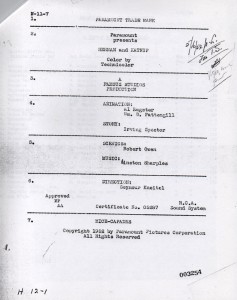


Some original pencils for the animation of the Herman and Katnip titles.
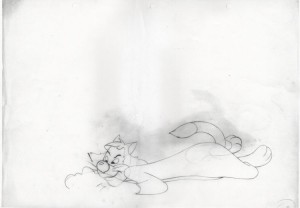
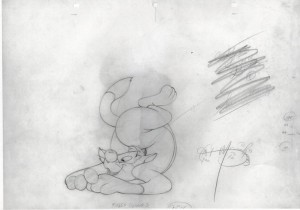
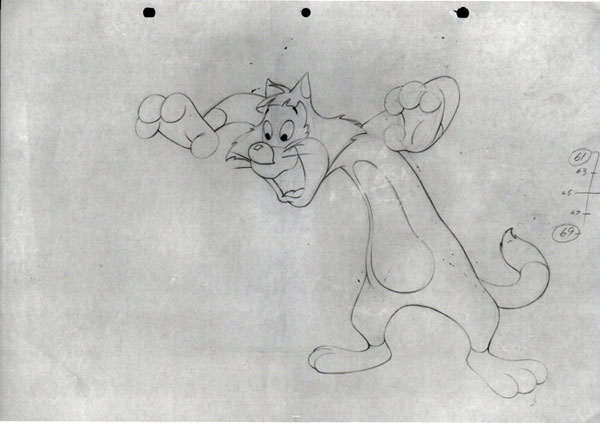
(Thanks this week to Howard Lowery, Ken Layton, Art Binninger and Thad)


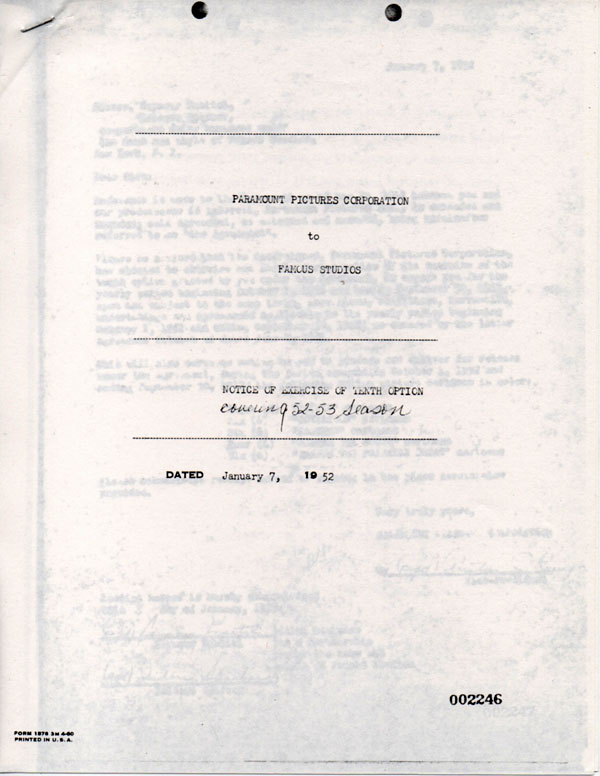




 Jerry Beck is a writer, animation producer, college professor and author of more than 15 books on animation history. He is a former studio exec with Nickelodeon Movies and Disney, and has written for The Hollywood Reporter and Variety. He has curated cartoons for DVD and blu-ray compilations and has lent his expertise to dozens of bonus documentaries and audio commentaries on such. Beck is currently on the faculty of Cal Arts in Valencia, UCLA in Westwood and Woodbury University in Burbank – teaching animation history. More about Jerry Beck [
Jerry Beck is a writer, animation producer, college professor and author of more than 15 books on animation history. He is a former studio exec with Nickelodeon Movies and Disney, and has written for The Hollywood Reporter and Variety. He has curated cartoons for DVD and blu-ray compilations and has lent his expertise to dozens of bonus documentaries and audio commentaries on such. Beck is currently on the faculty of Cal Arts in Valencia, UCLA in Westwood and Woodbury University in Burbank – teaching animation history. More about Jerry Beck [



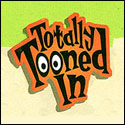



Jerry,I remember seeing a Famous bouncing ball cartoon which had a tramp steal an apple pie,get chased by a dog (whose head
gets caught in a fence),and
ends up in a land where everything is food. Do you know the name of the short,it’s year of release.and the song featured in it?
Sounds like 1963’s “Hobo’s Holiday”, the last Bouncing Ball cartoon. The copy Jerry posted on YouTube about six years ago has been taken down (there’s still one copy online, but it’s from a site I’ve never heard of, so your move if you want to click on the link — relax.khmer24h.net/play?key=JNj7GUnMXwxI4zf )
The song was “Big Rock Candy Mountain”.
Those exhibitor quotes are interesting. In a few, you can see that cartoons were largely carrying the short subject “block” in the theaters and general frustration in the increasing dearth of live-action short subjects from 1952-1953 compared to prior years.
This was the first year Irv Spector started receiving regular story credits, which was probably the biggest plus for Paramount’s cartoons moving forward through the early 1960s.
“Winner By A Hare” was one of the first of his stories that took a darker and more adult tone than your average Famous cartoon had for the past several years, in some cases harkening back to the sensibilities of the Fliescher-era shorts (Irv’s appearance in the story credits seems timed to roughly the period when Izzy Sparber wrote that letter to Art Davis that was posted online following Davis’ death, where Sparber was trying to locate Sid Marcus to offer him a job in Famous’ story department. Sid ended up sharing story duties for a year or so with Tedd Pierce in the Bob McKimson unit at Warners, so it wouldn’t be a surprise if Irv got the story position they were originally targeting for Sid).
Also note this little known fact: Harvey later obtained Paramount’s live action Toppers, Pacemakers and Sportlights live action shorts in the deal they would make with Paramount in 1958 – but we will talk about that in a later post.
That sounds interesting.
Can someone explain the difference between “Bugs Bunny Specials” and the Merrie Melodies-Looney Tunes series as defined in the Boxoffice trade magazine?
I guess I never realized that Bugs, it would seem, was trotted out as a separate series apart from MM/LT.
Well, not to get too far off-topic – but the difference was just how they sold the cartoons to the exhibitors. Bugs Bunny was so popular that Warners could get a better package deal from theaters by separating his cartoons from the rest of the MM & LT cartoons. “Bugs Bunny Specials” was an industry designation. Outside of his face in the concentric circles – and later his name getting a full screen title card, the cartoons themselves (as you know) were still part of Looney Tunes/Merrie Melodies series.
The NOVELTOON Champions re-released the next year in 1953-54 also did not get new “Champion” titles.
Hi Jerry,
I once saw a Casper cartoon in which Casper scares another character so bad that the character turns inside out, exposing his bones and other viscera. Any idea what this cartoon was titled?
Thanx—>Jack
This may seem like a strange memory to some, but these were the years of cartoons I discovered and often viewed on local TV in the mid-1960’s, and I enjoyed them immensely, even buying the thick coloring books around the Harvey/Famous roster of characters.
My “strange” memory, here, is that I had to admire the way that the Famous artists managed to draw so perfectly the human frame, allowing it to remain as cartoony as its surroundings. A perfect example of this was “SURF BORED” with Little Audrey, even the fingers and toes were perfect in identifying the character and his or her gait or overall characterization–makes me wonder all the more why they bothered with rotoscoping in the first place when they had such talented artists around to easily animate the humans. Not having a color TV at the time I discovered these cartoons, I imagined Katnip’s color in the BUZZY cartoons to be blue as the HARVEY comic book panels sometimes oddly colored him blue in BUZZY panels.
Buzzy’s later, alternate cat rival wasn’t actually Katnip, but rather (Katnip’s relative?) “Katsy.” He first appeared in the Buzzy cartoon NO IFS, ANDS, OR BUTTS, and became Buzzy’s standard foe in the comics—I’m presuming just to avoid featuring Katnip in too much output, though others may know better than I.
In these past weeks as you’ve unearthed so much Famous material that I’ve never seen before, I was wondering if you keep this stuff organized yourself or do you have someone to help you? If your collection is this rich in Famous memorabilia I can only imagine how much Warner, MGM and other items you have stashed away.
P.S. Thanks for the “thanks”.
So, how were the “Popeye Champion” reissues billed on screen? I’ve seen an example of the reissue card for the Noveltoons (with the “Brought back by popular demand” slogan), but I’ve never seen a comparable one for Popeye. Was any change made at all?
I don’t believe that the “Popeye Champions” (reissues) were ever given new on-screen titles. I’ve never seen one.
“Harvey later obtained Paramount’s live action Toppers, Pacemakers and Sportlights live action shorts in the deal they would make with Paramount in 1958 – but we will talk about that in a later post.”
Yeah… those live-action shorties put out by Paramount are scattered all over the place with multiple owners. It is great that the animated cartoons enjoyed SOME “after life” on TV, which is why we can discuss them on internet blogs today. Yet a whole chapter of movie history is still largely missing. (Ha ha! I’ve certainly complained enough about this on Leonard Maltin’s and TCM’s sites already. There are many great travelogues, comedy shorts and other “novelties” that aren’t Noveltoons that have yet to see daylight since the 1950s… if they haven’t turned to jelly by now.)
To second Jerry Beck on the “Popeye Champions,” this was the “reissue” name in the same manner as Warners’ used the name “Blue Ribbon” for its reissues. Paramount and Universal used the term “re-print” for the reissues of their live action films. Notice with the as for the Popeye cartoons that there were eight new and four reissues. This filled out their usual pattern of 12, or one per month. I believe MGM did the same thing as well, and created new titles on their reissued cartoons.
The practice of reissues was to save on production costs especially since the studios already had well-produced cartoons sitting on the shelves that were not terribly dated at the time.
“An exhibitor from Washington state says, “Someone should use penguins in a cartoon series.” Did Walter Lantz read that?
The comic strip panel-like ads of the mid-1940’s are sorely missed by this time. I wonder which animator did the art and writing for those? It would’ve been interesting to see the Famous Popeye series adapted for a Harvey comic book series with the work being done by the Famous staff.
Hi, I was hoping to see if anyone knows of a copy “Aero-Nutics” is online anywhere. I remember watching this as a youngster, and now sing “Josephine” to my daughter. I have explained to her where and when I first saw it and would love to show her. Any help would be greatly appreciated.
Cam
Not only was Buzzy’s rival Katnip in most shorts and the blue colored Katsy in the comics, in Buzzy’s toon Stupidstitious Cat, the feline talked like Jack Benny and resembled neither Katnip or Katsy in the slightest.
In the final Buzzy short No Ifs, Ands or Butts, a blue Katsy type character (similar to the comics) is used, but he still sounds just like Katnip (Syd Raymond).